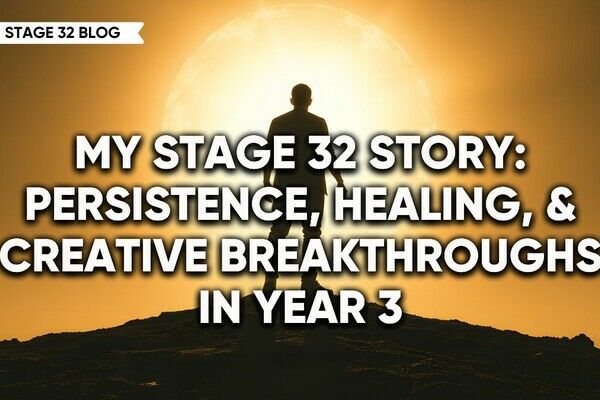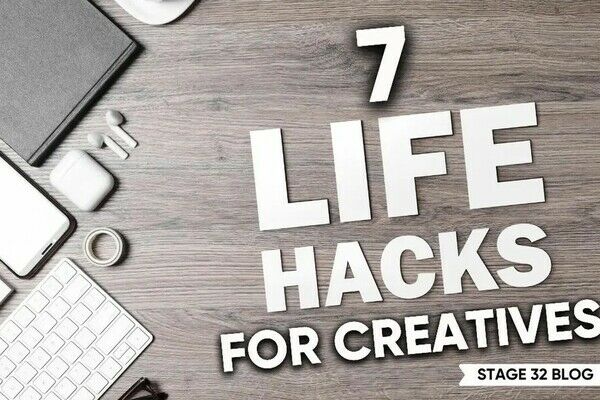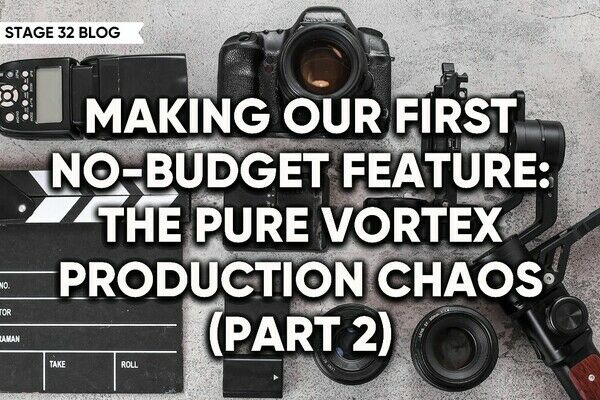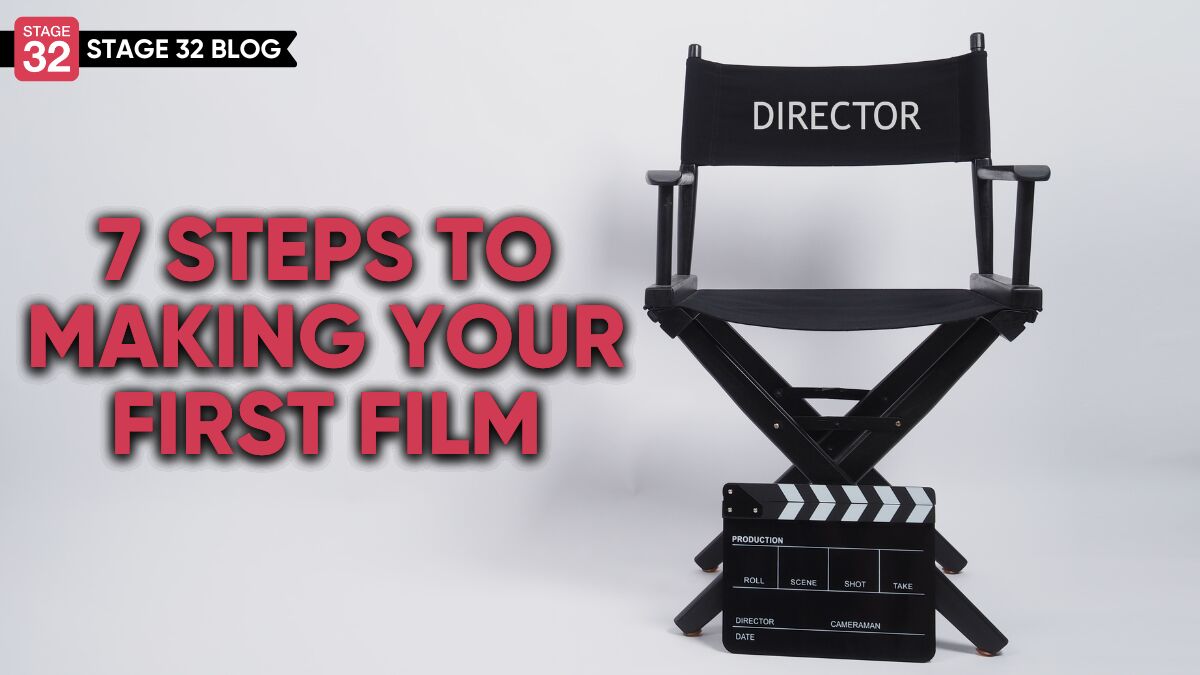Understanding Bottle Episodes: Curiosity About Storytelling in a Box
Let me start by saying, I’m not a writer. My professional world is built around cinema camera lens design and engineering (big shoutout to the Cinematography Lounge!). But when you’ve spent 17 years living with a writer and former development executive who eats, sleeps, and breathes story structure, character arcs, and prestige television… let’s just say it starts to rub off. In our house, conversations about film and television are as regular (and passionate) as debates about what’s for dinner.
Lately, one particular topic has taken center stage: "bottle episodes".
It started as a casual curiosity that led me to post a question in the Stage 32 Screenwriting Lounge: "Give me your best bottle episodes." I expected a few fun responses. Instead, what I got was a flood of passionate suggestions, sharp insights, and excellent questions about what exactly defines a bottle episode and why they work. You can check out the post here!
When Stage 32’s Head of Community, Ashley, asked if I’d write a blog expanding on that post, I jumped at the chance.

So What Is A Bottle Episode?
First things first, let’s talk about where the term "bottle episode" supposedly originated. According to legend, the phrase comes from the production team behind Star Trek. In an effort to cut costs, they would film episodes entirely on standing sets aboard the Enterprise, referring to the result as a "ship in a bottle." The term stuck, and bottle episodes have since evolved into a creative staple of television storytelling.
As Stage 32's own Pat Alexander explained in my post, "A bottle episode is an episode restricted in scope, typically confined to one setting with a limited number of cast members, effects, and sets."
Traditionally, bottle episodes were written as budget-saving devices. In the world of network television, especially 20+ episode seasons, studios needed ways to cut costs and keep production moving. This meant writing an episode that reused standing sets like the hospital break room in Grey’s Anatomy or the conference room in The Office, minimized guest stars, and avoided expensive visual effects. Oftentimes, they'd lock the characters in one room (literally or figuratively) and turn the focus inward.
The best episodes didn’t just save money, they became some of the most emotionally resonant and structurally daring episodes in television history.
Some classic examples include:
- "The One Where No One’s Ready" - Friends: The entire episode takes place in Monica’s apartment as the group struggles to get dressed for Ross’s big event.
- "The Chinese Restaurant" – Seinfeld: The gang just waits for a table. That’s it. It’s brilliant.
- "Room Service" – Frasier: Chaos in a hotel room, classic farce at its finest.
- "The Conversation" – Mad About You: Paul and Jamie lie in bed after a fight. One continuous take.
- "Ice" – The X-Files: Mulder and Scully investigate a deadly parasite in an arctic base, channeling The Thing in a tight, claustrophobic setting.
- "Lower Decks" – Star Trek: The Next Generation: Follows junior officers navigating a critical mission from outside the bridge crew’s perspective.
These episodes stripped away the noise to let the characters and writing shine.
One of the things I appreciate most about bottle episodes is how they create space for the peripherals, those often-overlooked elements of a show’s visual language like tone, texture, and atmosphere, to finally take center stage. In the rush of a traditional episodic structure, so much of the setting and design work can fade into the background. But bottle episodes force the show to sit in its world. They let the environment breathe, giving the audience a richer, more immersive sense of place. You walk away not just understanding the characters more deeply but with a sharper, more nuanced perspective of the show’s overall tone, setting, and visual identity. For anyone who cares about world-building, that’s a powerful gift.

How Streaming & Premium Dramas Changed What We Consider Bottle Episodes
As Ashley commented on my original post, "Over time, especially with the rise of premium cable and streaming, bottle episodes have evolved into creative storytelling showcases."
What started as a cost-cutting tool has now become a stylistic device. Writers use bottle episodes to explore characters in ways that traditional episode structure wouldn’t allow. These episodes often feel like mini-movies: self-contained, hyper-focused, and memorable. Over time, the definition has broadened, but the roots remain the same: do more with less.
In many ways, the rise of anthological series like Black Mirror, where each episode is essentially a short film, has encouraged creators to reimagine what a "bottle episode" can be. It doesn’t need to be one room. It just needs to be intimate, focused, and narratively tight.
In shows like Atlanta, the bottle episode has become more than just a one-off; it’s evolved into a recurring storytelling device. Across multiple seasons, Atlanta leaned into the bottle format to experiment with tone, structure, and theme. Some even argue that Season 3 is almost entirely composed of stand-alone episodes, each functioning like its own self-contained short film. Episodes like "Teddy Perkins", "Trini 2 De Bone", "Rich Wigga, Poor Wigga", and "FUBU" depart from the show’s core ensemble and central arc to explore deeply specific, surreal, and emotionally resonant narratives. These episodes don’t just fill space, they redefine the impact of the series.
Examples of more modern "bottle episodes":
- "Teddy Perkins" - Atlanta: A psychological horror episode that’s tonally distinct from the rest of the series. It isolates Darius in a mansion with a masked recluse, evoking eerie themes of identity and fame.
- "A Dark Quiet Death" - Mythic Quest: An episode entirely separate from the main cast and timeline, telling the tragic love story of a game studio’s rise and fall. It’s a bottle episode, not in the traditional sense, but in its focus and contained narrative.
- "Kiksuya" – Westworld: Centered on Akecheta, a character rarely seen in previous episodes, this deeply emotional hour rewrites the audience’s understanding of the show's world.
- "Pine Barrens" – The Sopranos: A botched mob hit in the snow turns into a survivalist nightmare. Equal parts comedy, chaos, and character development.
- "Blackwater" – Game of Thrones: An intense, large-scale battle confined to King’s Landing’s walls and waters.
- "The Constant" – Lost: Desmond’s consciousness travels through time, combining science fiction and emotional storytelling.
There’s been a lot of debate online about whether episodes like Game of Thrones’ “Blackwater” truly qualify as bottle episodes. At first glance, its large-scale action and high production value seem to defy the traditional constraints of a bottle episode. But that's the whole point of this modern take, isn't it? When examined through a more nuanced lens, one that prioritizes narrative focus, limited setting, and contained storytelling, a strong case can be made. “Blackwater” unfolds entirely during one night, in one location, centering exclusively on the Battle of Blackwater Bay. The episode narrows its scope to a single event, limiting the sprawling series’ usual multi-location storytelling. That intense focus and self-contained structure reflect the same core principles that define a bottle episode, even if the budget doesn’t.

Animated Bottle Episodes
Bottle episodes aren’t limited to live-action television. Animation has given us some unforgettable entries in the format:
- "Free Churro" – BoJack Horseman: A single-location eulogy delivered by BoJack in real time. A raw, emotional monologue that reveals so much with so little.
- "Rixty Minutes" – Rick and Morty: The family watches alternate reality TV clips, never leaving the living room.
- "Brian & Stewie" – Family Guy: The two characters are trapped in a bank vault, reflecting on life, fear, and mortality.
- "Vision Quest" – Archer: The main cast is stuck in an elevator for the entire episode, sparking chaos, comedy, and confessions.
Bottle Episodes in the Time of COVID
When the pandemic hit, bottle episodes became a necessity again, but this time, for safety and logistics.
With production limitations forcing smaller casts, minimal locations, and tighter budgets, writers leaned into constraint. Bottle episodes reemerged as a smart workaround. Shows like Mythic Quest embraced this with the episode "Quarantine," where the entire episode plays out over Zoom. Despite the distance, the episode captured the human need for connection, blending humor with sincerity. It was a brilliant adaptation of the format, executed with heart and wit.
Pandemic-era bottle episodes reflect how the industry can adapt and how format limitations often lead to unexpected storytelling gold.

Beloved (and Widely Recommended) Bottle Episodes
If you’re looking to study great bottle episodes, here are a few that came up again and again in the Lounge, along with a few personal favorites:
- "Fly" - Breaking Bad: Walter becomes obsessed with a contaminant in the lab, creating an introspective (and divisive) hour almost entirely between Walt and Jesse trapped in the lab. (My personal favorite!)
- "The Suitcase" – Mad Men: Don and Peggy clash and connect in a brilliant showcase of character development. (Thank you for the recommendation, RB Botto!)
- "Cooperative Calligraphy" - Community: A missing pen traps the study group in the study room, turning into an all-out character breakdown. (Thank you for the recommendation, Ewan Dunbar!)
- "Midnight" – Doctor Who: The Doctor is trapped with strangers and no help. It’s claustrophobic and terrifying. (Thank you for the recommendation, Ashley!)
- "Cause and Effect" – Star Trek: The Next Generation: The Enterprise becomes trapped in a time loop, repeatedly ending in its own destruction, as the crew slowly uncovers clues to break the cycle. (Thanks for the recommendation, Francisco Castro!)
- "Bottled" – Horace and Pete: The entire episode unfolds in a single room as Horace and Alice engage in an intense, emotionally raw conversation that reveals their shared past and deep psychological wounds. (Thanks for the recommendation, E. Langley!)
- "Window of Opportunity" – Stargate SG-1: A time loop leads to comedy and despair.
- "Out of Gas" – Firefly: The crew is scattered, and Mal fights for survival alone on a dying ship.
- "Baby" – Supernatural: Told entirely from the perspective of the brothers’ 1967 Chevy Impala.
- "A Day in the Life" – The Magicians: A Groundhog Day-style time loop follows Elliot and Quentin reliving the same day over and over inside the Library.
- "The Box" – Brooklyn Nine-Nine: Jake and Holt interrogate a suspect all night in a battle of wits.
- "17 People" – The West Wing: Toby uncovers the President’s secret while the staff wrestles with personal dilemmas, all within the White House.
- "Chardee MacDennis: The Game of Games" – It’s Always Sunny in Philadelphia: The gang plays their own absurd board game in the bar.
- "Q&A" – Homeland: A tense interrogation between Carrie and Brody that breaks both characters open.
- "Dinner Party" – The Office: A painfully awkward evening with Michael and Jan in their condo.
How the Community Inspires Creativity
One of the things I love most about being a part of Stage 32 is that a simple conversation can spark something much bigger. A casual post in the Screenwriting Lounge turned into a deep dive of one of television’s most fascinating storytelling techniques. These conversations push us to revisit great episodes, challenge our assumptions, and most importantly, spark our creativity.
Whether you’re a writer, director, actor, or camera nerd like me, the community here on Stage 32 can push you to think deeper, revisit great work, and maybe even see your own project in a new light.
Let's Keep The Conversation Going...
If you could write a bottle episode for a favorite show, what would it look like? What would the setting be? Who would be in the room? Would you trap your characters in an elevator, set it in a single room, or take a surreal detour from the main plot?
Let's hear your thoughts in the comments below!
Got an idea for a post? Or have you collaborated with Stage 32 members to create a project? We'd love to hear about it. Email Ashley at blog@stage32.com and let's get your post published!
Please help support your fellow Stage 32ers by sharing this on social. Check out the social media buttons at the top to share on Instagram @stage32 Twitter @stage32 Facebook @stage32 and LinkedIn @stage-32
| 7 Steps To Making Your First Film! |
| You Might Land on TV or in a Magazine If You Never Give Up! |
Search Stage 32 Blog
There are now 4031 blog posts for you to enjoy. Search them all by tags below.
Acting, Advice, Cinematography, Coffee & Content, Composing, Contests, Distribution, Featured, Filmmaking, Financing, Inspirational, Networking, Producing, Screenwriting, Success Stories, Tips, Trending,Relevant Tags
Recommended Articles

Happy Thanksgiving From Stage 32: We Are Thankful For YOU

Forbes Spotlights Stage 32 Certification!

My Stage 32 Story: Persistence, Healing, & Creative Breakthroughs in Year 3

7 Life Hacks For Creatives

Strengthening Croatia’s Creative Future: Inside Zagreb’s Partnership with Stage 32 Certification

How Modern Franchises Became Our New Religion

Coffee & Content: Opening Doors & Taking Control of Your Creative Path

Stage 32 + DramaBox Join Forces to Launch World's First Vertical Drama Incubator

Making Our First No-Budget Feature: The Pure Vortex Production Chaos (Part 2)






